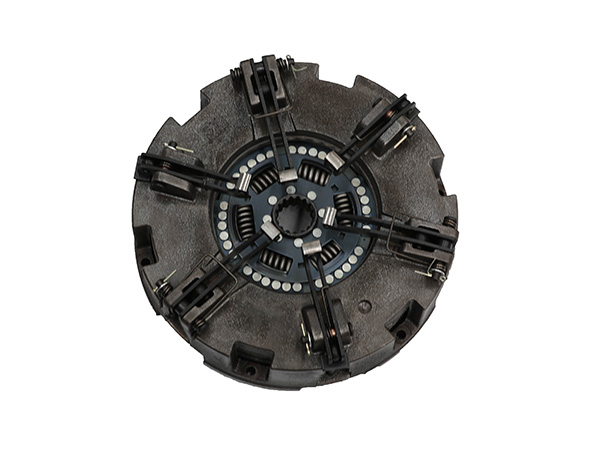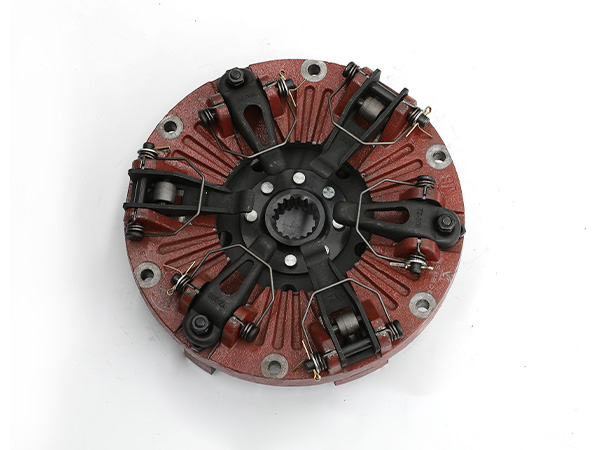Tractor clutches are mostly friction clutches. The friction clutch transmits power by means of friction. In order to ensure that the clutch can transmit all the torque of the engine during the working process and reduce the slippage during the engagement process, the structural design can ensure that the transmission ratio is issued under the calibration condition of the engine. Large torque 1 ~ 1. 2 times. The torque that the clutch can transmit, that is, the working performance is related to the following factors:
(1) Friction coefficient
The ratio of the friction force to the positive pressure (compression force) is the coefficient of friction, which is expressed by how many Newtons of friction force can be generated per 10 N of positive pressure on the friction surface. The same amount of positive pressure, if the friction coefficient is large, the friction force is also large. The size of the friction coefficient is related to the material and working conditions of the two friction surfaces. Under the working conditions of the friction surface of the same material, the friction coefficient of cast iron or steel to copper wire asbestos lining is larger than that of cast iron or steel to steel.

(2) The pressing force between the friction surfaces
It is known from physics that the greater the pressing force between the contact surfaces of two objects, the greater the frictional force that can be generated, and the two are proportional.
(3) The logarithm of the friction surface
Under the same pressing force, when the number of friction surfaces of the same size is doubled, the friction force generated is also doubled. The single-piece driven disc has two pairs of friction surfaces, and the double-piece driven disc has four pairs of friction surfaces.

(4) The distance between the friction surface and the center of rotation
The friction plate is a plane ring, the resultant force of the friction force on the friction surface acts in the middle of the ring, the rotation center of the friction plate is the axis of the clutch, and the distance between the action point of the resultant friction force and the rotation center is the force arm. The average radius of the annular end face is large, and the friction torque generated by it is also large.
For a tractor clutch, the material, size and logarithm of the friction surface of the master and slave parts are fixed, but the friction coefficient and pressing force may change during the working process. For example, when the tractor is moving away, shifting gears requires engaging or disengaging the clutch.
Slippage often occurs between the driving part and the driven part of the clutch. Excessive slippage not only accelerates the wear of the friction plates, but also generates a lot of heat and affects the normal operation of the clutch. When the temperature of the friction plate is too high, the friction coefficient will be reduced, and in severe cases, the friction plate will be burned, and the steel plate on the driven plate will be bent and deformed. Excessive heating of the compression spring will also anneal, reducing the compression force.


